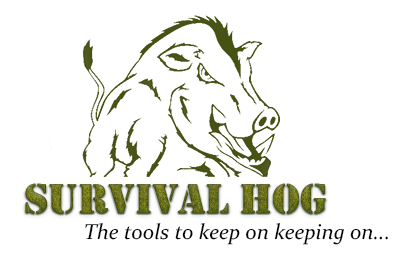Imagine a scenario where you’re driving home from work and there’s a traffic jam. You don’t think much of it at first until you notice panic in the faces of other motorists. Something has happened and it’s bad. You reach for your cellphone to call your wife and receive the message “We’re sorry, your call cannot be completed at this time.” The cellphone network is jammed because too many people are trying to use the network at one time. What do you do now?
We’ve become so dependent on cellphone technology that it’s hard to imagine our phones just not working, but it’s happened before. In times of natural disasters the cellphone networks have often collapsed. Even large events like football games have overworked networks to the point of collapse. They’re simply not designed for everyone to be on them at once. For this reason there has been a push towards getting people to send text messages instead of voice calls in emergency situations because it frees up the network. Unfortunately it’s not so easy for crowds to think so rationally during an emergency, and I too would try to call my family, not text. So what are the other options besides a cellphone? It’s simple, direct radio communication.
CB, amateur radio, and GMRS, are all systems that can keep you in touch with your family should SHTF. The only one that requires no license is Citizen Band radio. GMRS requires that you pay a fee to the FCC for a license which is good for 10 years and includes your family members at no additional costs. Amateur radio will require that you pass a written exam to become a Technician and you can then progress to the General license after another exam for bands that are able to communicate around the world. So which is best for you?
I should start out by letting you know that in an emergency situation all bands are fair game; however, you should pick a band that allows you to legally practice and become proficient. Your family should know the frequencies you will be using and you should designate 1 frequency where you’ll be able to find each other, as well as a backup frequency.
As a licensed amateur radio operator I’ve been partial to ham radio. It can be fun for the whole family and as a technician you have access to the 2 meter band as well as 76cm, plus all of the local repeaters across the country to really boost your coverage area. Some limited shortwave communication is also possible with the technician class but to really open up the shortwave bands you’d want the General license. If a test is not something you want to undertake then your next best thing would be to pay the FCC fee and acquire a GMRS license. You’re limited to 50 watts of power but that’s still much better than the 4 watts of power from CB radios, and GMRS radios have access to GMRS repeaters as well. With a little planning you should be able to communicate with your family directly if within range, or through a GMRS repeater.
Any dual-band amateur radio should work on GMRS as long as you don’t go over the 50W GMRS limit. Handheld units are also great for hiking, but typically max out at between 5 and 7 watts of power. For the full 50W you’d want a vehicle mounted system. Keep in mind that if you have a vehicle mounted system and your family has a handheld you could end up in a situation where they hear you but you cannot hear them. You could setup a home base station with a large roof-mounted antenna for even better reception. The sky’s the limit when it comes to radio communication. No pun intended.
